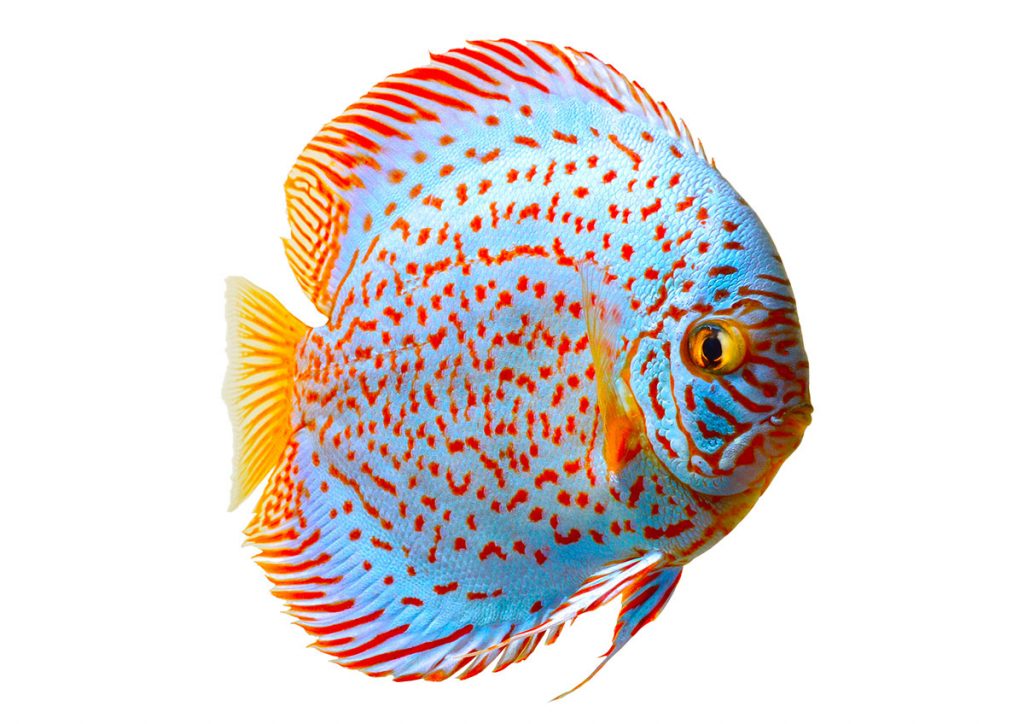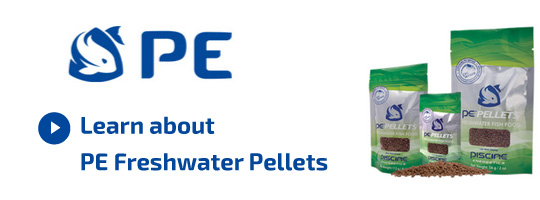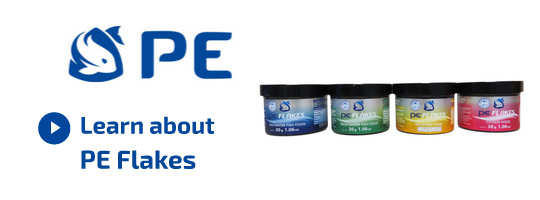Discus Species
Discus
Discus fish are considered by many to be the king of freshwater fish, with a very large following having developed around the care and breeding of these unique fish. Discus are members of the Symphysodon genus, representing three species. Discus have been selectively bred for many generations and are now available in a dizzying array of colors and patterns. Competitions and discus shows take place all over the world where breeders can exhibit their prize specimens and compete for cash prizes and notoriety.
The Blue Discus (Symphysodon aequifasciatus) is one of the more commonly encountered species of discus. The other two species include the Heckel Discus (Symphysodon heckel), and the Green Discus (Sympysodon tarzoo).
Biology
Discus are native to South America where they are found from the Amazon region to the Rio Negro. They are large fish averaging approximately 8” (20 cm).
One of the most fascinating aspects of discus biology is their mode of reproduction. Like many other members of the cichlid group, discus provide parental care for their fry. However, discus fry are unique in their behavior of feeding off of their parent’s slime coat.
Captive Care
Discus can make great aquarium inhabitants, provided their husbandry needs such as diet, water quality and tank space are met. Discus are considered to be better suited to more experienced fish keepers due to their sensitive nature and requirement for ideal water parameters. In spite of their large size, discus do not do well with other overly larger or aggressive fish. In fact, discus are often best suited to being kept with only members of their own species, or other very small passive fish such as Cardinal Tetras.
Discus like it hot, preferring a temperature range of 79 F (26C) to 86F (30C). Discus can be kept in a range of tank sizes, depending upon filtration capacity and stocking density. A good starting point for a school of six discus is a tank approximately 75 gallons in size.
Suggested Piscine Energetics Products
We suggest a diet based on Piscine Energetics Frozen Mysis, Piscine Energetics Frozen Calanus, Piscine Energetics Mysis Pellets (1mm and 2mm) and Piscine Energetics Cichlid Flakes.
What people are saying about PE:
After feeding my seahorses your mysis for about 3 months; they are fat and happy!!! they give me baby seahorses (at least 300 ) each 14 days... So I'm very satisfied of your mysis.The frozen mysis is about 70 per cent of their diet.
Yvan Charbonneau Quebec
I am keeping these Indian mudskippers -- very cute -- about 3-4 inches long. I've been feeding them frozen bloodworm, and decided to try them on mysis. I feed them in a "shallows" in the 150 I have set up for them. The minute the mysis hit the water they were on it, frozen and all. They gorged until their little bellies were almost bursting. I have yet to see an aquatic creature that does not go absolutely nuts over PE Mysis.
David Lass Massachusetts
I picked up my Mysis today and they arrived wonderfully. All the fish I fed them to, absolutely devoured them. They are my Frontosas new favorite food. All my Discus ate them up eagerly...heads and all!! I want to thank you again for your excellent service and product.
Pierre Brenton Nova Scotia
I have a large saltwater aquarium (220 gallons) with very expensive fishes and invertebrates. I tried to feed them with your PE Mysis and they really went crazy about it. Since that time, some of my fishes refuse any other product I offer them!






